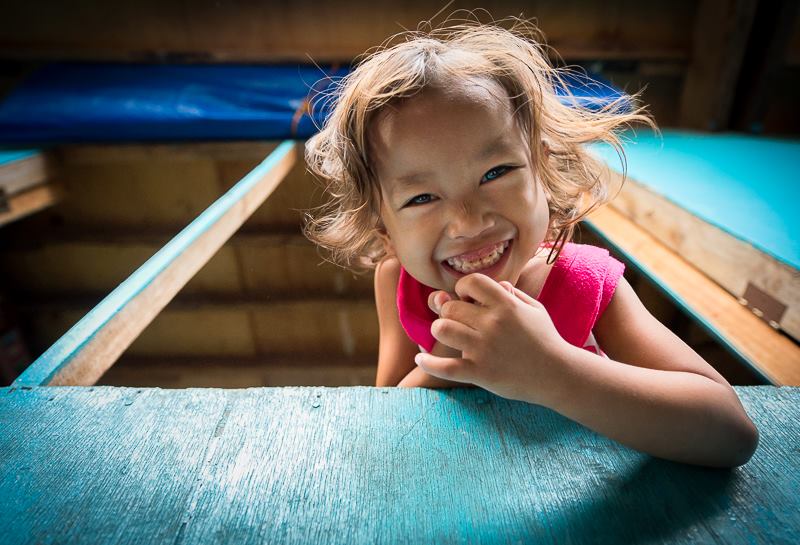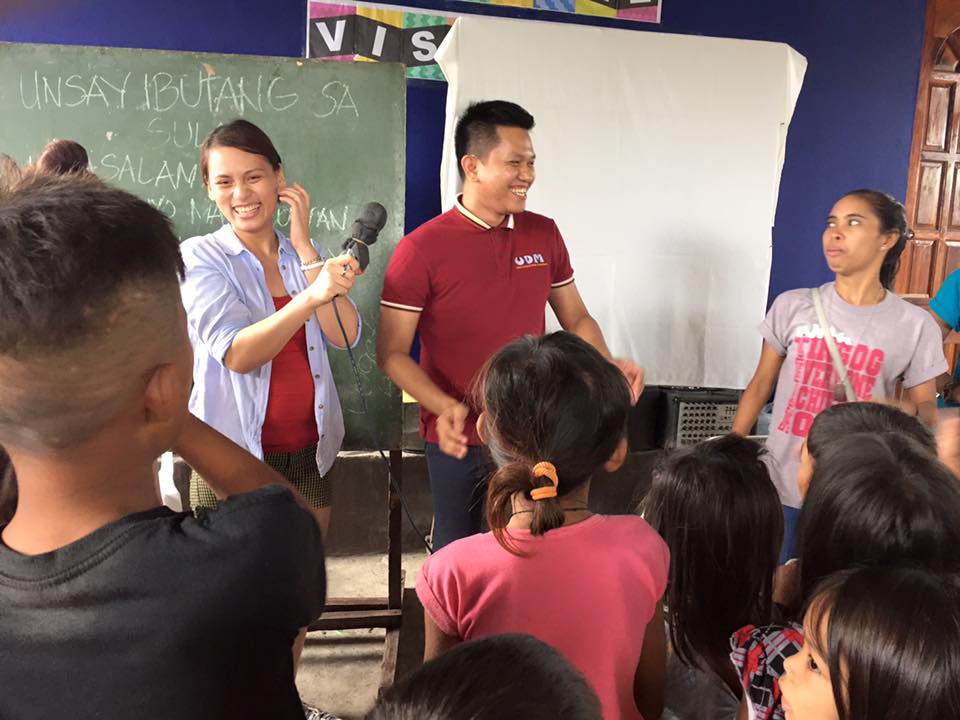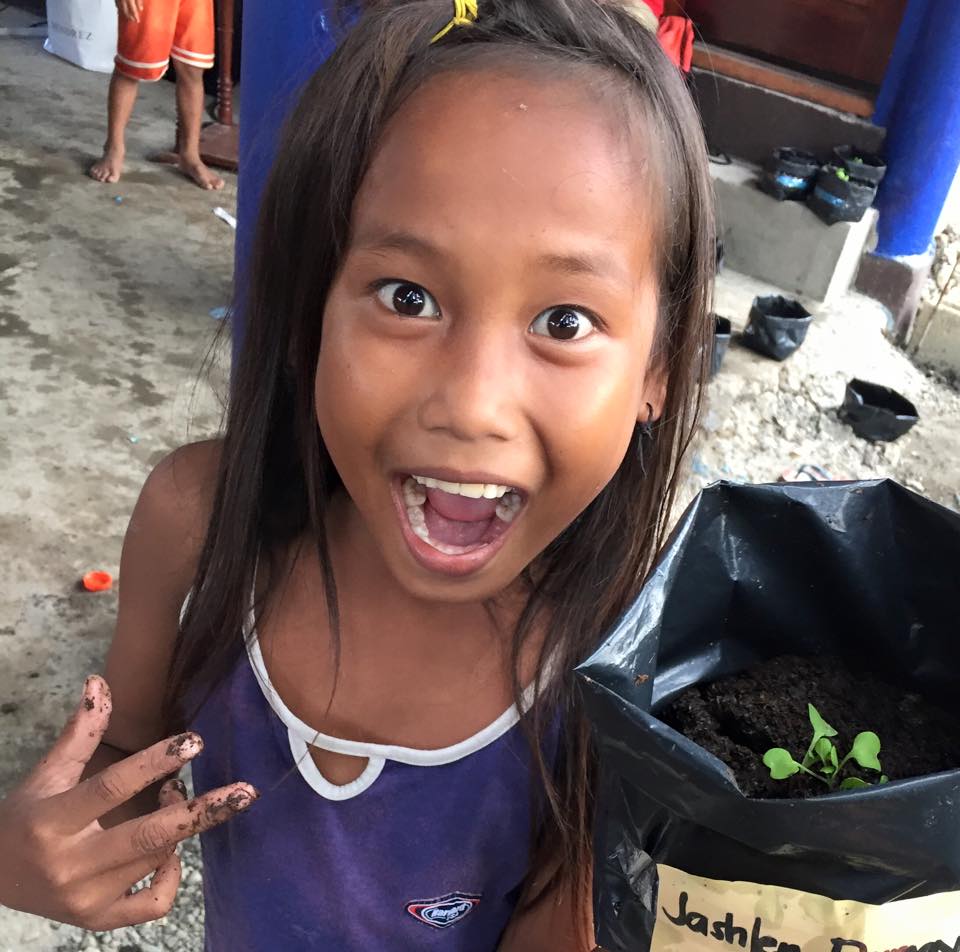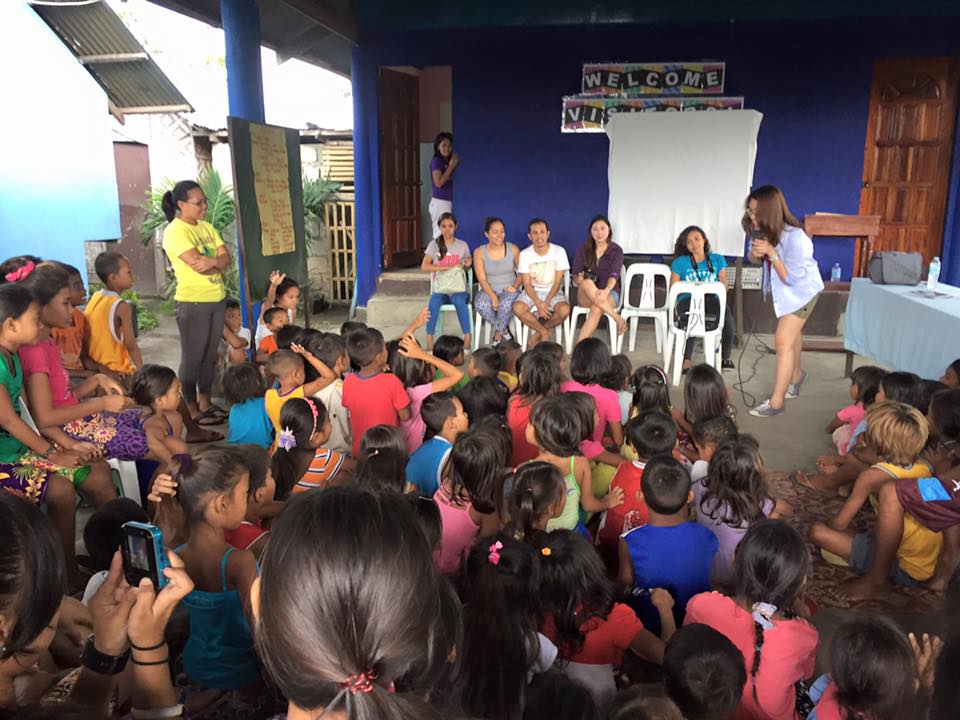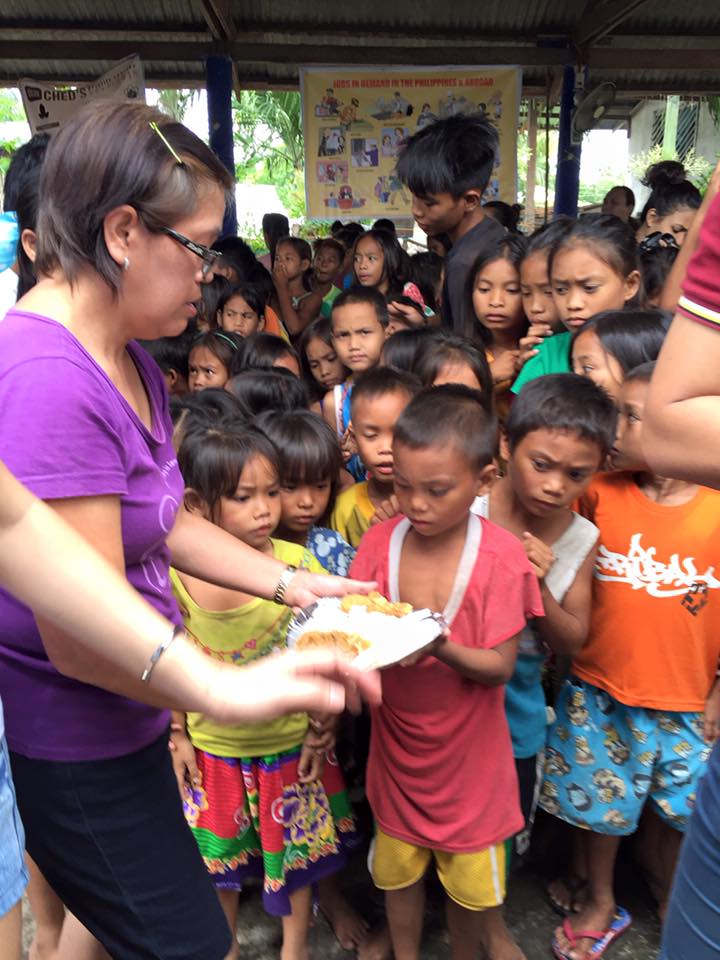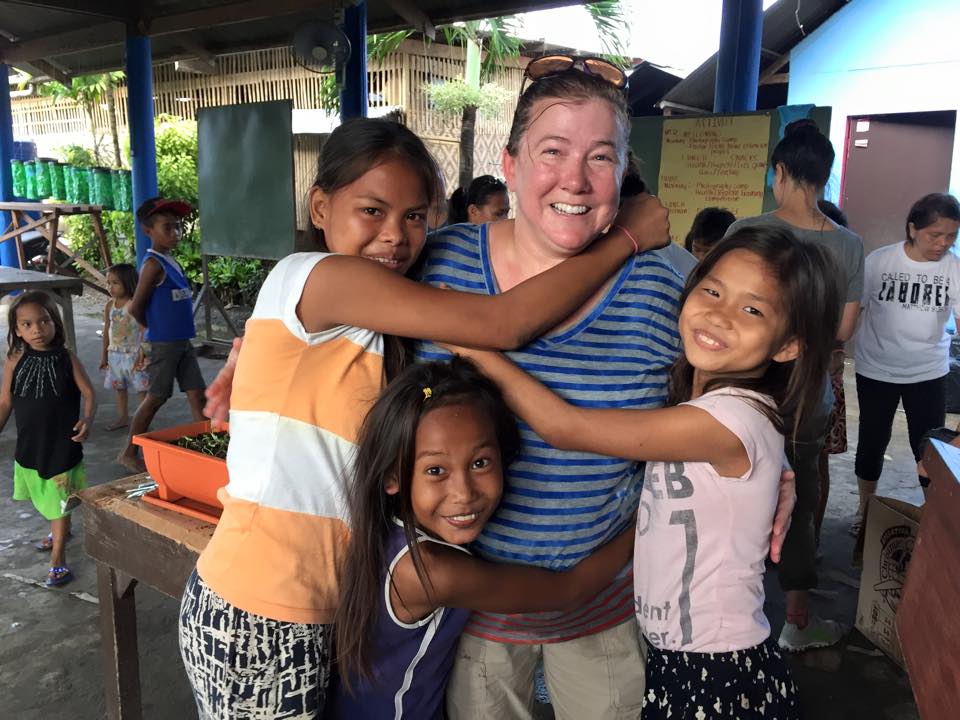While the hand built motorized outrigger churned toward our small group standing on the coral north shore, we could just make out a smiling Joshua, top spear fisherman of the Badjao tribe, standing in the bow holding out to us something long and silvery.
As the boat drew closer through the slightly choppy blue-green water of the Cebu Strait it became apparent that he was holding our lunch, a huge barracuda he had just caught.
As the group of four Badjao fishermen piled out of the boat it was obvious they were as excited about sharing their prize with us as they were about catching it. A fish that could have brought 600 pesos at the market –a good price for an entire day’s work – was their gift to their American guests visiting as part of a mission trip from Badjao Bridge and the First Presbyterian Church of Hayward (CA).
As the fish was chopped up and put in a pot of boiling water for us to share with rice and vegetables, we realized this just another example of how some of the world’s most desperately poor are among the most unreservedly generous.
The impromptu lunch was followed by a voyage on two outriggers into the channel between Panglao and Cebu islands, where we visited a desert island before enjoying spectacular snorkeling in the waters above the reef. Off to the west we could see darkly looming from the southern tip of the island of Negros Oriental the 6,200 foot high Mount Talinis, considered by seismologists a “potentially active” volcano.
The afternoon was more than ecotourism, it was an opportunity to see how these sea gypsies practice their traditional livelihood. At the same time, the heads of Badjao households wrestle with the opposition of governments to their fishing methods and some recognize their impoverished tribe may be faced with developing a lifestyle more dependent on the land, including jewelry making with pearls. That means the children of these nomads who largely live on houses on stilts above the ocean will be dependent on the one thing most other cultures take for granted: an education.
That’s the mission of Badjao Bridge, the nonprofit organization dedicated to raising the Badjao up from poverty by sponsoring children to attend school and other classes, providing nourishment with free lunches, and giving educational experiences in hygiene, gardening, and the arts.
A recent week-long visit to a Badjao tribe allowed seven of us from the Hayward and Castro Valley communities to see how the Badjao live. Working mainly with children, we treated their hair for lice, gave out toothbrushes and showed how to use them, and gave lessons in how to wash their hands. The children were delighted to plant tomatoes that will grow in special upside down planters. Children who live over the sea or on a coral shore can be unfamiliar with basic gardening.
There was singing and dancing, and a group of young professionals from the nearby island of Cebu dropped by to talk about different careers that can be open to children who take advantage of going to school.
More than 100 Badjao children are able to go to school thanks to sponsorships that allow them to have uniforms and shoes. Another 50 children, who are not allowed to attend public school because they don’t have birth certificates, attend classes in a Badjao Bridge classroom in the village.
A bittersweet highlight of our visit came on our last day, when we distributed 200 pairs of shoes donated by members of the First Presbyterian Church of Hayward. The need was so great that we could have used 50 more pairs.
The work of Badjao Bridge continues because of the generosity of donors in the USA and the Philippines. Anyone interested in visiting the Badjao can do so during guided trips hosted by our director here and staff on site in the Philippines.







